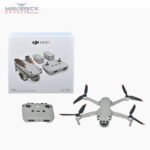Overview of Drone Farming
Introduction to Drone Technology in Agriculture
Drone technology in agriculture is revolutionizing how farmers approach their crops. When I first heard about drones in farming, I wasn’t sure how they’d fit into the traditional farming landscape. However, once I started researching, it became clear that drones are not just a passing fad—they’re key tools that are enhancing productivity, efficiency, and sustainability in agriculture. These aerial vehicles are equipped with various sensors and cameras, allowing them to gather detailed information about large areas of farmland quickly and without much human intervention. They can fly above fields, capturing high-resolution images and data, making it easier for farmers to monitor their crops. This technology is paving the way for precision farming, where decisions are data-driven rather than based on guessing or traditional observation. Imagine yourself soaring over your fields, spotting potential issues from the air that would be nearly impossible to see from the ground. With drones, this is not just a dream; it’s a reality for many. Whether you farm a small plot or manage thousands of acres, drone technology can play a significant role in improving your farming practices.
Advantages of Using Drones in Farming
The advantages of using drones in farming are extensive and compelling. Here are some key benefits:
- Cost-Effective Solutions: Initially, investing in drone technology may seem like a significant expense. However, when you consider the efficiency gains and the savings in labor costs and reduced chemical usage, you realize that they can pay for themselves over time. For instance, using drones can cut down scouting time by up to 90%, allowing you to allocate resources more effectively.
- Enhanced Crop Health Monitoring: Drones can quickly assess the health of crops, identifying areas that may require more attention. By using multispectral imaging, they can highlight issues like pest infestations or water stress that the naked eye might miss.
- Precision and Accuracy: The data collected by drones allows for precision agriculture techniques, ensuring that inputs like fertilizers, pesticides, and water are applied exactly where needed rather than spread uniformly over entire fields. With this targeting approach, farmers can optimize their input costs while maximizing yield.
- Increased Safety: In replacing the need for humans to traverse potentially hazardous or difficult-to-access areas, drones can also enhance safety on the farm. For example, when applying pesticides or inspecting fields, drones avoid direct exposure to chemicals and reduce the risk associated with farm machinery.
- Data-Driven Insights: Drones gather data over time, creating valuable records. This information can help you make better decisions regarding crop rotation, planting times, and overall management strategies. As a result, farming becomes more scientific, leading to higher productivity and sustainability.
- Sustainable Practices: With capabilities for precision spraying and monitoring, drones help minimize waste and reduce the impact of farming on the environment. This aligns with the growing demand for sustainable agricultural practices from consumers and regulatory bodies alike.
Here’s a quick overview of some specific applications of drone technology in farming:
| Application | Benefit |
|---|---|
| Crop Health Monitoring | Swift identification of pests and diseases |
| Field Mapping | Creating detailed 3D maps for better planning |
| Irrigation Management | Identifying dry areas needing more water |
| Crop Spraying | Targeted applications reducing chemical usage |
Each of these applications contributes to an overarching goal: transforming agriculture into a more efficient, sustainable, and data-driven industry. In conclusion, integrating drones into your farming practices can not only save you time and money but also enhance your decision-making capabilities. As you embrace this technological shift, remember that the future of farming relies increasingly on data and innovation. By adapting to these changes, you’re not just improving your yields; you’re paving the way for the future of agriculture. 🌱🚀
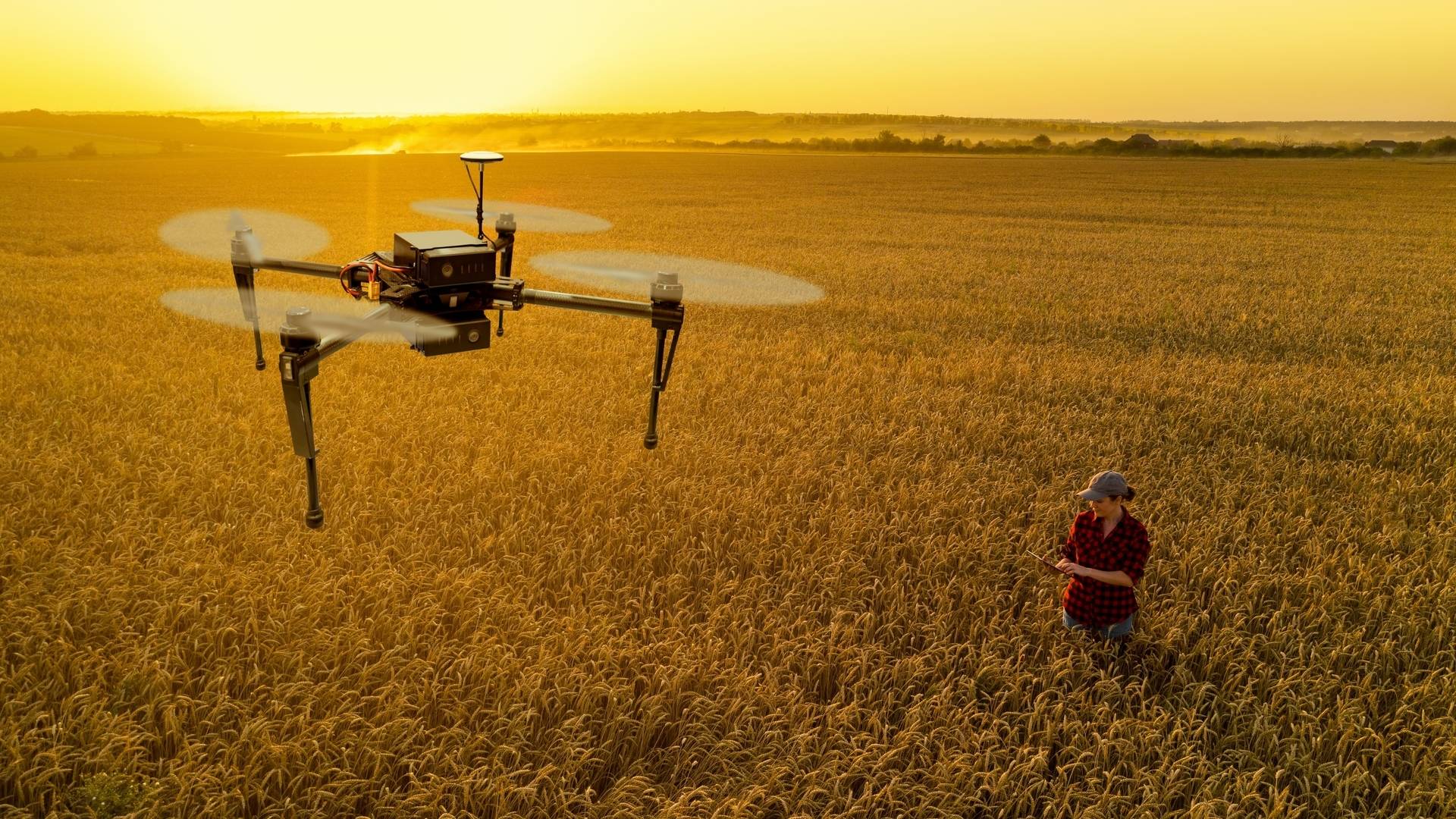
Increased Efficiency in Crop Monitoring
Real-Time Data Collection
Building on our understanding of drone technology in agriculture, one of the standout benefits is the ability to collect real-time data, providing invaluable insights into crop health and field conditions. Imagine flying a drone over your fields early in the morning, watching as it captures high-definition images. Within minutes, this data transforms into actionable insights directly on your device—it’s almost like having a second pair of eyes that never tires! The ability to collect continuous, real-time data enables you to monitor crops throughout their growth cycle. For example, you can easily check moisture levels, identify pest infestations, and evaluate the impact of recent weather events. This immediacy allows for quicker responses to potential issues, which can be critical in plants’ growth stages. Some key benefits of real-time data collection include:
- Proactive Management: With data at your fingertips, it’s easier to make timely decisions. If you see a section of your field showing signs of stress, you can investigate and treat it before it spreads.
- Detailed Analyses: Real-time collection means you can compare data across different time periods comfortably, allowing for deeper insights into how various factors affect crop yields.
- Cost Savings: By addressing issues as they arise, you can avoid more extensive problems that lead to costly interventions later on, such as extensive pesticide applications or irrigation fails.
Tools like NDVI (Normalized Difference Vegetation Index) cameras mounted on drones can analyze crop health by looking at plant reflectance levels. These readings can provide you with a clear picture of where resources should be applied most efficiently.
Precision Agriculture Techniques
Transitioning to precision agriculture techniques, we can see how drones play a pivotal role in enhancing these methods. Precision agriculture focuses on using technology to optimize field-level management with regards to crop farming. Drones provide an innovative means of implementing these techniques efficiently and effectively. Here’s how drones enhance precision agriculture:
- Variable Rate Application: Drones can provide data that allows you to apply fertilizers, herbicides, and fungicides only where needed. This targeted approach can decrease chemical usage, minimizing costs and environmental impact. For instance, if you only need to treat 40% of your field for pests, the drone delivers exactly that amount, saving resources and protecting non-target areas.
- Soil Health Monitoring: Drones can assess soil conditions by collecting information on moisture content and nutrient levels. By understanding soil variability, you can tailor your inputs accordingly, ensuring that each section of your field receives just what it needs.
- Yield Prediction: Advanced algorithms analyze the data collected from drone flights to develop predictive models. This information can help forecast potential yields and guide harvesting schedules, leading to greater operational efficiency.
Here’s a summary of how precision agriculture techniques can maximize crop productivity:
| Technique | Benefit |
|---|---|
| Variable Rate Application | Reduces input costs by tailoring applications |
| Soil Health Monitoring | Enhances decision-making with targeted soil interventions |
| Yield Prediction | Improves planning and optimizes harvest strategies |
Implementing these techniques could feel daunting at first, but as I found from my experience, embracing this level of precision pays off. Watching your yields grow while minimizing costs and environmental impact is not just rewarding—it’s essential for sustainability in modern farming. As you continue to explore drones in crop monitoring, remember how real-time data collection and precision techniques are reshaping agricultural practices. They simplify operations and contribute to better resource management, ultimately enhancing yields while minimizing waste. Embrace the drone revolution; it might just be the game-changer your farming operations need! 🚜✨
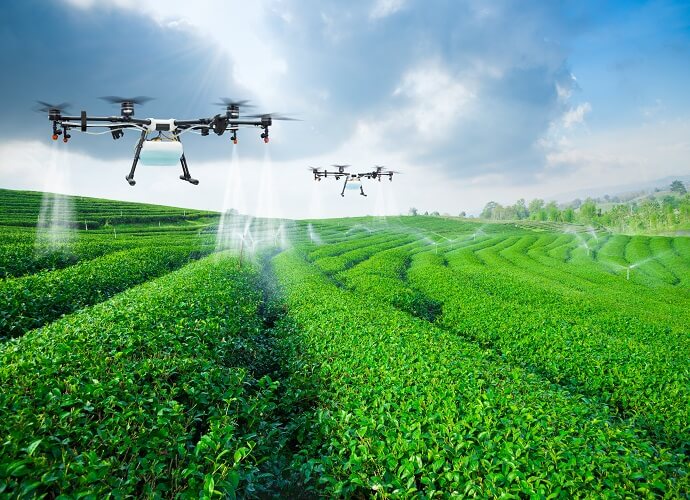
Improved Crop Spraying Techniques
Targeted Application of Pesticides
Following the advancements we discussed in crop monitoring, let’s dive into another exciting area where drone technology truly shines: improved crop spraying techniques. The idea of spraying pesticides might seem straightforward, yet integrating drones can revolutionize this aspect of farming. With drones, the application of pesticides can be targeted more accurately than ever before. Traditional methods often involve spreading chemicals across vast areas, leading to wasted resources and unintended damage to non-target crops or beneficial insects. Drones, on the other hand, allow you to focus precisely on areas that need treatment. Just last season, I witnessed a neighbor using a drone for his crop spraying instead of his usual ground method. The drone could identify spots that had pest infestations while flying over the fields. Instead of treating the entire field, he only sprayed the affected areas. This targeted approach not only saved him a significant amount of money on chemical costs but also helped preserve the health of his beneficial insects and pollinators. Here are some benefits of targeted pesticide application with drones:
- Enhanced Precision: Drones equipped with advanced sensors can detect pests and diseases at an early stage, allowing for pinpoint applications.
- Reduced Drift: Wind can severely impact the effectiveness of pesticide application. Drones fly just above the crop canopy, reducing the risk of drift and ensuring that most of the chemical reaches its intended target.
- Improved Coverage: Drones can easily navigate uneven terrain and dense crops, ensuring that every inch is accessed and treated when necessary.
Here’s what the targeted application process looks like:
| Step | Process |
|---|---|
| Data Collection | Use drones for initial monitoring of crop health |
| Identification | Detect and map problem areas needing treatment |
| Application | Employ drones to spray pesticides only on affected areas |
By embracing these new spraying techniques, you not only encourage a healthier crop but foster environmental sustainability, providing a win-win scenario for farmers and ecosystems alike.
Reduction in Chemical Usage
Transitioning from targeted applications, let’s explore how drones contribute to the overall reduction in chemical usage—a compelling benefit as we strive for sustainable farming solutions. When pesticides are applied using drones, you’re effectively reducing the total amount needed for effective treatment. Recent studies have shown that drone spraying can use up to 90% less chemical compared to traditional methods. This significant reduction not only saves costs but also lessens the environmental impact of farming operations. Here are some of the key advantages of reduced chemical usage through drone applications:
- Lower Environmental Impact: With lesser chemicals applied, there’s reduced risk of contaminating local water supplies and harming beneficial organisms in the soil or surrounding habitat.
- Healthier Soils: Excess pesticide can harm soil microbiomes, which are crucial to soil health and nutrient cycling. By applying only necessary amounts, you’re supporting healthier, more resilient soils.
- Regulatory Compliance: As regulations around chemical usage tighten, utilizing drones responsibly positions you favorably within the legal framework. Being proactive in reduction builds a better reputation with consumers and regulatory bodies alike.
- Sustainable Practices: Reducing chemical applications aligns with the growing consumer demand for sustainably produced food. By practicing responsible pest management, you cater to a market that increasingly values environmentally friendly options.
To sum it up, here’s a quick visual representation of the potential savings through drone applications:
| Aspect | Traditional Spraying | Drone Spraying |
|---|---|---|
| Chemical Usage | High | Low |
| Environmental Impact | Significant | Minimal |
| Cost Effectiveness | Limited | Enhanced |
Improved crop spraying techniques through drone applications are not merely a trend; they are essential for the future of agriculture. By reducing chemical usage and focusing on targeted applications, you can protect your crops, your profits, and the planet. It’s an evolving tech that every modern farmer should consider embracing. As you step towards this innovative approach, you’re setting the stage for both sustainability and profitability in your farming journey. 🌾✨

Enhanced Crop Mapping and Analysis
Data-Driven Decision Making
Continuing from our discussion about improved crop spraying techniques, let’s delve into the realm of enhanced crop mapping and analysis. Drones have become vital in providing farmers with precise data that greatly influences decision-making processes. The modern farming landscape is no longer reliant solely on intuition; it’s about making informed decisions based on data analytics. When I first started using drones for crop mapping, I was amazed by how effectively they could create detailed maps of my fields. These maps can display an array of information—everything from soil moisture levels to crop density. This data can turn a broad, sweeping view of your property into a microcosm of actionable insights. Here are some key benefits of embracing data-driven decision-making:
- Timely Interventions: With accurate maps, you can spot variations in crop health, soil quality, and irrigation needs promptly. This ensures that you can jump into action before minor issues escalate.
- Resource Allocation: Understanding the specific needs of each section of your fields allows you to allocate resources more efficiently. For example, if one area is suffering from nutrient deficiency, you can tailor your fertilization strategy accordingly.
- Informed Planning: Data insights can help you fine-tune your planting schedules and crop rotation strategies. By analyzing which crops thrived in specific areas year after year, you can optimize your yield cycles.
- Performance Tracking: By continuously monitoring your fields using drones, you can track the evolving health of your crops over time. This is invaluable for adjusting your practices and learning what works best on your land.
Let’s break down how data-driven decision-making impacts your production:
| Decision | Traditional Approach | Data-Driven Approach |
|---|---|---|
| Crop Selection | Based on experience | Analytical assessment of previous yields |
| Pest Management | Blanket treatments | Targeted applications based on pest mapping |
| Irrigation Needs | General rules | Specific moisture data for tailored applications |
By leveraging modern technology, you can elevate your farming practices and embrace a future where precision agriculture prevails.
Identifying Crop Health Issues Early
Now, let’s bridge into identifying crop health issues early, which is one of the most significant advantages of utilizing drones in crop mapping and analysis. Early detection can make the difference between a small fix and a full-blown crisis. Drones equipped with infrared and multispectral cameras can uncover plant stress that often eludes the naked eye. Just last season, I noticed that while my traditional methods were effective to a point, they often missed early symptoms of diseases or pest damage. Thanks to drones, I discovered a patch of corn that was showing early signs of blight much earlier than I would have caught it otherwise. Here’s how drones facilitate the early identification of crop health issues:
- Advanced Imaging Technology: Drones can capture images across multiple spectra, which helps detect discrepancies in crop health. For example, healthy plants reflect light differently than those with disease or nutrient deficiencies.
- Regular Monitoring: Frequent drone flights allow you to keep tabs on your crops throughout the growing season. Regular data can reveal trends in crop health, making it easier to act when you notice an anomaly.
- Increased Accuracy: By utilizing drones for crop monitoring, the risk of false positives or negatives in assessing crop conditions is significantly reduced. This accuracy empowers you to take appropriate action without second-guessing your observations.
- Cost and Time Savings: Detecting issues early helps you save on labor and resource costs. Instead of reacting to a widespread problem, you can address and resolve issues before they affect the overall field.
Here’s a simple look at the timeline of benefits when identifying issues early:
| Timeline | Farmers’ Approach | With Drone Technology |
|---|---|---|
| Early Stage | Miss subtle changes | Capture data regularly |
| Peak Growth | Discover damage late | Implement interventions swiftly |
| Post-Harvest | Analyze problems after yield loss | Optimize future planning based on real-time insights |
With the ability to identify and correct crop health issues early on, you not only improve your chances of maximizing yields but also foster a sustainable farming ecosystem. In conclusion, enhanced crop mapping and analysis via drones allow you to harness the power of data for improved decision-making while enabling early detection of crop health issues. As you continue to explore these advancements, you’ll be amazed at how data and technology can transform your farming methods, reduce risk, and ultimately ensure a healthier, more productive harvest. 🌱📊
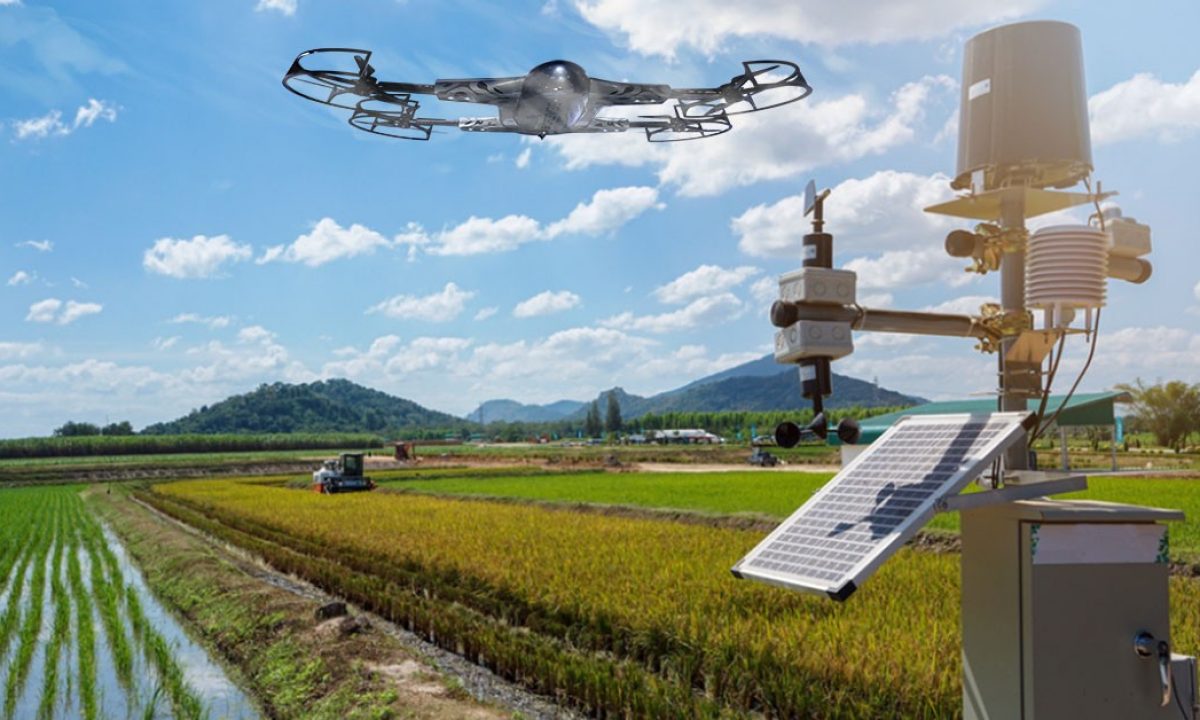
Drone Applications in Livestock Management
Monitoring Animal Health and Behavior
Transitioning from the advantageous applications of drones in crop management, it’s exciting to explore how these technologies are shaping livestock management as well. Just like in crop farming, drones offer invaluable tools for monitoring the health and behavior of livestock, making it easier than ever for farmers to ensure their animals thrive. A few months back, while attending a workshop on drone technology, I learned about how farmers are leveraging drones to keep an eye on their herds from a bird’s-eye view. Observing how animals move and interact can provide critical insights into their health and well-being. For instance, if one cow is lagging behind the rest of the herd, it could signal health problems that need immediate attention. Here are some notable benefits of using drones for monitoring animal health and behavior:
- Immediate Insights: Drones are equipped with high-resolution cameras that can capture real-time footage of your livestock. This allows for quick evaluations of animal behavior, helping you to identify any abnormal signs that could indicate disease or distress.
- Stress Detection: Animals tend to behave differently when they are stressed. Using drone surveillance, you can spot changes in livestock behavior that may suggest they require attention, whether due to changes in their environment or health issues.
- Visual Health Checks: Drones can help you view your animals from above, allowing you to inspect the condition of their coats, body posture, and even mobility. This means that instead of rounding them up for examination, you can often identify issues from the air.
- Better Management Decisions: By consistently monitoring animal health and behaviors, you can adjust feeding, breeding, and overall herd management strategies based on observable data.
Here’s a summary of how drone monitoring is transforming livestock management:
| Monitoring Aspect | Traditional Approach | Drone Technology Benefit |
|---|---|---|
| Health Assessments | Physical check-ups | Real-time visual health monitoring |
| Behavioral Observations | Ground-level observation | Aerial insights into flock dynamics |
| Stress Indicators | Late detection based on signs of distress | Early identification of stressed animals |
With drones, you can not only save time and resources on livestock management but also enhance the overall well-being of your animals, which translates to better productivity down the line.
Tracking Livestock Movement
Expanding from health monitoring, another key application of drones in livestock management is tracking the movement of your herd. Understanding where your animals are and how they move across your pastures is essential for effective management and resource allocation. Drones can aid in tracking livestock movement over large areas, making it effortless to monitor their grazing patterns. A while back, I met a rancher who had integrated drone tracking into their day-to-day operations. They expressed how drones had turned a painstaking task into a simple process of flying a drone over the fields to see exactly where every animal was grazing. Here are some advantages of utilizing drones for tracking livestock:
- Efficient Grazing Management: By observing livestock grazing habits through drone footage, you can determine how effectively your animals are utilizing pasture. This helps you plan rotations and manage forage availability to ensure healthy grazing conditions.
- Reduced Labor: Tracking livestock typically requires multiple personnel or dogs to round up animals. Drones simplify this task, allowing you to oversee large expanses of land quickly and with minimal manpower.
- Immediate Location Updates: Drones provide real-time data on animal locations, ensuring that if any livestock strays into unwanted areas or away from your property, you’ll know instantly. This is particularly helpful in remote or rugged landscapes.
- Tracking Breeding and Nesting Behavior: Drones can be employed to monitor movement patterns particularly during breeding seasons. This data can help you make informed decisions about breeding programs and better manage your herd’s growth.
Here’s a quick visual representation of the benefits of tracking livestock movement using drones:
| Aspect | Manual Tracking | Drone-Assisted Tracking |
|---|---|---|
| Grazing Patterns | Time-consuming manual observation | Quick aerial assessment |
| Labor Requirements | High | Significantly reduced |
| Location Updates | Delayed, needs human effort | Instantaneous and efficient |
In sum, drone applications in livestock management provide a unique edge by offering real-time insights into animal health and behavior, as well as effectively tracking movement across large pastures. With the integration of drone technology in your rural practices, you empower yourself with enhanced management, ensuring both the welfare of your animals and the efficiency of your farming operation. As you venture into the world of drone-assisted livestock management, you’ll discover that the benefits extend beyond mere convenience. They allow for a deeper connection with your herd and a reflection of more thoughtful and sustainable farming practices. 🐮🚁✨
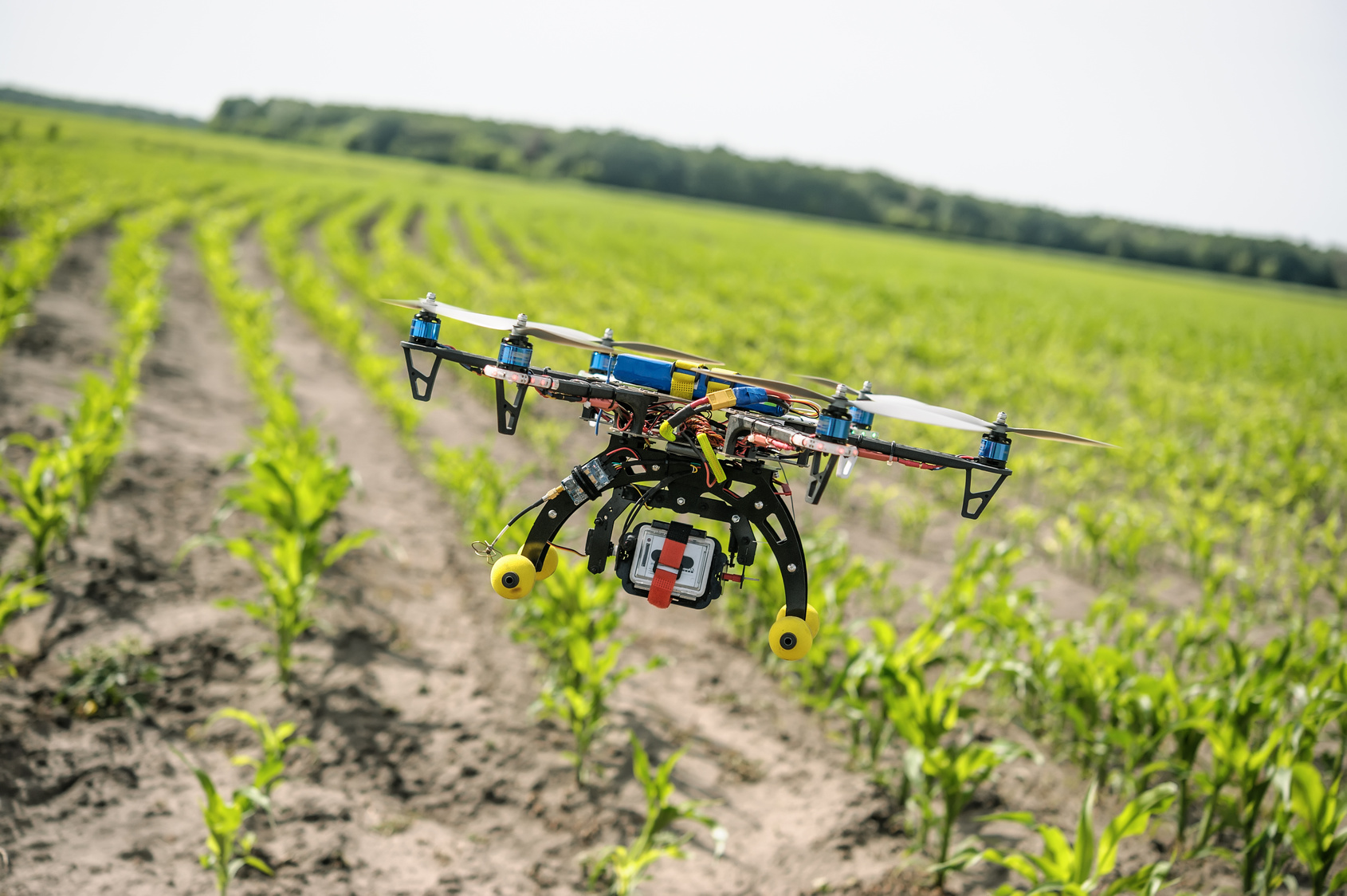
Costs and ROI of Implementing Drone Technology in Farming
Initial Investment Considerations
After delving into the impressive applications of drones in livestock management, it’s crucial to discuss the costs and return on investment (ROI) associated with implementing drone technology in farming. Understanding the initial investment considerations is your first step in deciding whether drones are a suitable choice for your agricultural practices. When I first thought about investing in a drone, I was surprised at the variety of options available, ranging from entry-level models to high-end, feature-rich drones. The price tags can vary significantly, so knowing what you need is key. Here are some factors to consider when evaluating the initial costs:
- Drone Purchase Price: Basic models can start around $1,000, while advanced drones equipped with multispectral sensors and high-resolution cameras can reach upwards of $10,000 or more. Tailor your choice to your specific needs, whether for crop monitoring, livestock management, or both.
- Additional Equipment: Consider any ancillary equipment you’ll need, such as extra batteries, chargers, and carrying cases. If you opt for drones that require complex sensors, budget for those as well.
- Software Costs: Many drones come with proprietary software or subscriptions for data analysis. These costs, while often overlooked, are essential for reaping the full benefits of your drone’s capabilities.
- Training and Certification: Depending on where you live, you may need to comply with local aviation regulations. This can involve obtaining licenses or permits, which adds to your initial expenses.
- Maintenance Costs: Drones require regular maintenance to operate optimally. Be sure to factor in servicing costs, potential repairs, and upgrades as technology evolves.
Here’s a simplified overview of potential initial costs:
| Cost Component | Estimated Costs |
|---|---|
| Drone Purchase Price | $1,000 – $10,000+ |
| Additional Equipment | $200 – $1,000 |
| Software Costs | $100 – $500+ per year |
| Training and Certification | $500 – $2,000 |
| Maintenance | $100 – $500 per year |
Knowing these initial investments can help you gauge whether the value added by drone technology will outweigh these costs in the long run.
Long-Term Financial Benefits
Once you’ve weighed the initial investment, the next vital consideration is the long-term financial benefits of drone technology in agriculture. The best part? The ROI can be significant when you integrate drones wisely into your farming operations. I remember hearing from a farmer who reported their drone had paid for itself within just a couple of seasons. The efficiency gains and data-driven insights translated into tangible benefits, and here’s how:
- Increased Efficiency: Drones can reduce the time spent on tasks like crop monitoring and livestock tracking by up to 90%. This means you can reallocate your labor resources to other productivity-driven tasks, maximizing your overall efficiency.
- Higher Crop Yields: With improved data collection, you can make informed decisions on crop health and nutrient management. A solid application of drone data can lead to healthier crops and ultimately higher yields, which directly correlates with better sales.
- Reduced Input Costs: By adopting precision agriculture techniques, you can minimize the usage of fertilizers, pesticides, and water. This not only leads to cost savings but also enhances sustainability on your farm.
- Better Pest and Disease Management: Early detection of issues translates into quicker, more targeted interventions, meaning you’ll spend less on treatment costs and loss of crops to diseases or pests over time.
- Enhanced Decision-Making: Drones provide ongoing data that can contribute to long-term strategic planning, including crop rotation, diversifying crops, and improving overall farm management strategies.
To illustrate the long-term benefits, here’s a potential ROI comparison:
| Benefit | Before Drones | With Drones |
|---|---|---|
| Crop Monitoring Frequency | Monthly | Weekly or Daily |
| Labor Costs | High (multiple employees needed) | Lower (reduced manpower) |
| Yield Increase | 10-15% | 20-30% or more |
| Input Reduction | Standard use | 30-50% savings on chemicals |
Ultimately, while the initial investment may seem daunting, the long-term financial benefits of implementing drone technology in your farming operations can be substantial. By enhancing productivity, lowering costs, improving crop yields, and enabling smarter decision-making, you’re positioning yourself for greater profitability. As you consider the investment in drone technology, keep in mind that embracing this modern approach is a step toward a more sustainable and successful farming future. With careful planning and consideration, the ROI can make integrating drones not just beneficial but essential for your operations. 🌾💡
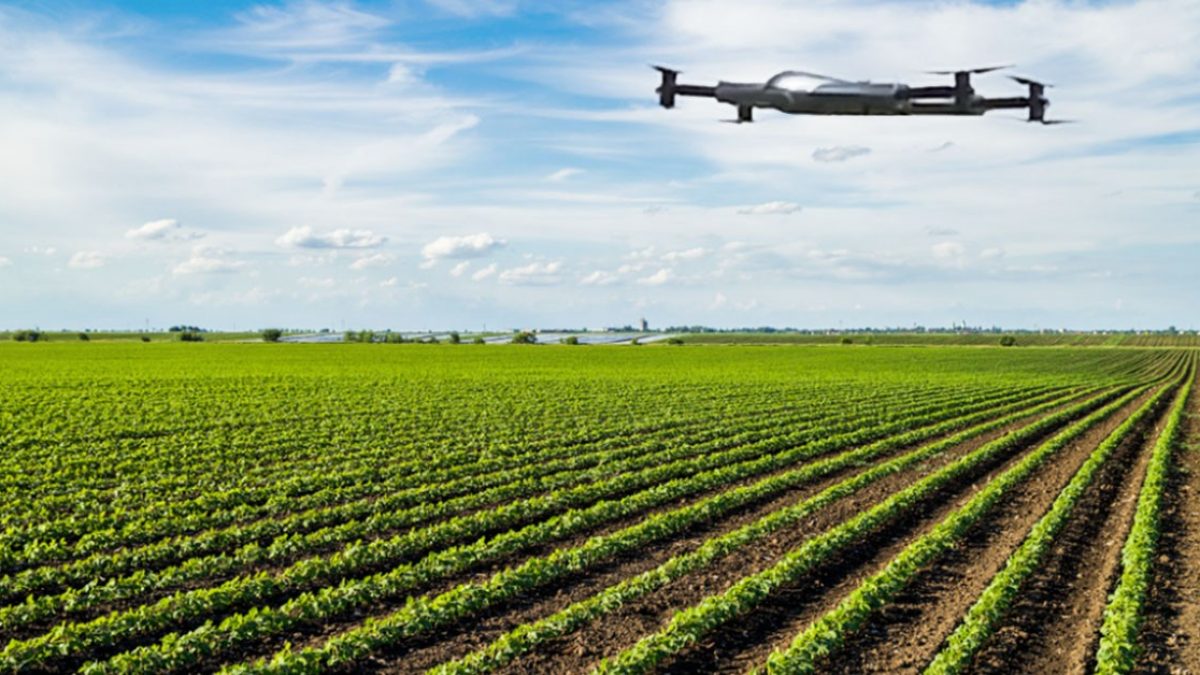
Regulatory Considerations for Drone Farming
Compliance with Aviation Laws
As we wrap up our discussion about the costs and ROI of implementing drone technology in farming, it’s essential to address the regulatory considerations that come with using drones for agricultural purposes. Understanding and complying with aviation laws is crucial for any farmer looking to integrate drone technology effectively and legally. When I first ventured into using drones on my farm, I quickly realized that navigating the regulatory landscape was just as important as learning how to operate the actual equipment. The last thing you want is to invest time and money into drone technology only to find you’re running afoul of the law! Here are some key points to keep in mind regarding compliance with aviation laws:
- Federal Regulations: In the United States, the Federal Aviation Administration (FAA) largely governs drone use. Drones must be registered, and you need to stay updated on rules concerning flight altitudes, no-fly zones, and operational limitations. Every farmer should familiarize themselves with Part 107 of the FAA regulations for commercial drone use—this covers everything from how far you can fly a drone to required certifications.
- Licensing Requirements: If you’re using drones for commercial purposes, you generally need a Remote Pilot Certificate. This involves passing an FAA-approved knowledge test. While the certification process can seem daunting, I found that it gave me a deeper understanding of the safe operational practices needed for flying drones.
- Insurance: Investing in drone insurance is often overlooked but highly recommended. It protects you against liabilities in case of accidents or damage.
- Local Regulations: On top of federal regulations, check with local authorities for any additional rules that may apply in your area. Some regions have specific restrictions on drone flight, and being aware of these can save you from future headaches.
- Airspace Awareness: Be mindful of air traffic—drones can’t be flown in restricted airspace without prior approval. Utilizing tools like the FAA’s B4UFLY app can help you access live information regarding local airspace restrictions.
Here’s a quick overview of what you might want to consider for compliance:
| Regulation Aspect | Requirements |
|---|---|
| Federal Regulations | Follow FAA rules, primarily Part 107 |
| Licensing | Obtain a Remote Pilot Certificate |
| Insurance | Acquire liability insurance for drone operations |
| Local Laws | Research and comply with any local drone regulations |
| Airspace Management | Use apps to ensure you’re aware of airspace limits |
Taking the time to understand and comply with these regulations ensures not only a smooth operational process but also helps create a safer environment for everyone involved.
Privacy and Data Security Issues
Moving on from regulatory compliance, let’s examine another essential aspect of drone farming—privacy and data security issues. Drones equipped with high-resolution cameras and sensors can collect vast amounts of data. While this information is invaluable for crop and livestock management, it also raises important privacy concerns. A few months ago, a discussion I had with fellow farmers touched on the ethical implications of using drones for surveillance. While most of us are focused on improving farm productivity, it was enlightening to consider how we manage the data we collect. Here are a few critical points to remember regarding privacy and data security:
- Data Ownership: One of the first questions you should ask is who owns the data collected by drones. Are you sure that you have exclusive rights to this information, or is it shared with third-party data analytics firms? It’s vital to understand the terms of service associated with any software or apps you use.
- Personal Privacy: Drones can inadvertently capture images of neighboring properties or roads. Being attentive to privacy boundaries is critical. It’s wise to fly within your own agricultural boundaries and avoid capturing images that don’t pertain to your farming operations.
- Data Security: Protecting the data you collect, whether it be crop health images, livestock behavior, or environmental metrics, is crucial. Ensure that any information stored digitally is secured with strong passwords and encryption to protect against unauthorized access.
- Compliance with Privacy Laws: Just as you need to comply with aviation regulations, familiarize yourself with local privacy laws. Specific areas may have regulations regarding surveillance and data collection, and it’s important to ensure that your farming practices adhere to these laws.
Here’s a brief summary of privacy considerations in drone farming:
| Privacy Aspect | Considerations |
|---|---|
| Data Ownership | Understand who owns the collected data |
| Personal Privacy | Avoid capturing images of unintended areas |
| Data Security | Encrypt and secure collected data |
| Compliance with Laws | Research applicable privacy laws |
In conclusion, while drone technology offers efficient and innovative solutions for modern farming, it also comes with its own set of regulatory considerations. Familiarizing yourself with aviation laws and understanding the implications of data privacy and security can help you navigate the challenges of drone farming effectively. By ensuring regulatory compliance and securing the data you collect, you’re not only protecting your investment but also fostering trust within your community. With these considerations in mind, you can embrace the benefits of drones while maintaining a responsible and ethical approach to modern agriculture. 🚜🔍

Future Trends in Drone Farming
Integration of AI and Machine Learning
As we transition from discussing regulatory considerations to looking ahead at future trends in drone farming, the advancements in technology promise to reshape the agricultural landscape considerably. One of the most exciting areas of development is the integration of artificial intelligence (AI) and machine learning (ML) with drone technology. During a recent farm technology expo, I attended a fascinating demonstration showcasing how AI-powered drones could analyze crop data in real-time, significantly enhancing decision-making processes. This integration is truly a game-changer, and here are some of the key benefits:
- Enhanced Data Analysis: AI algorithms can process vast amounts of data collected by drones, identifying patterns and trends that may not be immediately visible to the human eye. For example, they can determine which sectors of your field are underperforming compared to historical data and recommend adjustments.
- Predictive Analytics: With machine learning capabilities, drones can provide predictive insights about potential crop yields, pest outbreaks, or soil health issues. By analyzing past data, these systems can alert you before a problem becomes critical, streamlining resource allocation and improving crop management.
- Automated Process Optimization: AI can help optimize various farming processes, from irrigation schedules to fertilizer applications. Based on the data collected, drones can develop tailored suggestions that maximize efficiency and effectiveness.
- Personalized Farming Solutions: With the help of AI and drone technology, farmers can receive customized insights tailored to their specific fields and crops. This personalization enables more nuanced decision-making, ultimately leading to better yields and healthier crops.
Here’s a simplified breakdown of how AI and ML enhance drone farming:
| Aspect | Traditional Approach | AI & Machine Learning Integration |
|---|---|---|
| Data Analysis | Manual and time-consuming | Automated with quick insights |
| Predictive Insights | Based on experience | Data-driven predictions |
| Process Optimization | General practices | Tailored recommendations for specific needs |
| Custom Solutions | Broad strategies | Personalized farming solutions |
By embracing AI and machine learning, farmers can harness valuable insights that would have otherwise been out of reach, transforming how we approach agriculture in the process.
Potential for Autonomous Farming Operations
Looking even further into the future, the potential for autonomous farming operations stands as one of the most promising trends in agriculture. As drones become more sophisticated, the idea of fully autonomous farming may not be as far-fetched as it once seemed. I recall chatting with a tech-savvy farmer who had begun experimenting with autonomous drones for daily tasks. He shared how these drones could autonomously handle everything from crop monitoring to targeted spraying without human intervention. Here are some potential developments we can anticipate:
- Self-Navigating Drones: As we develop better sensor technology and GPS capabilities, drones could navigate and operate autonomously across large fields, monitoring crops and livestock with minimal oversight. This would significantly reduce the labor burden and allow farmers to focus on more strategic activities.
- Automated Task Execution: In the future, drones could not only monitor conditions but also perform tasks such as spraying pesticides or delivering feed. With preset algorithms and real-time data, these drones could operate around the clock, optimizing farming operations.
- Robust Fleet Management: As drone technology matures, it’s feasible to envision entire fleets of drones working together autonomously, covering significant ground on larger farms. Utilizing a central control system, these drone fleets could have coordinated tasks like planting, spraying, and surveying integrated into their routines.
- Integration with Other Machinery: The future may see drones working in tandem with autonomous tractors and other farming equipment, creating a connected ecosystem for farming operations. This level of integration would enhance overall efficiency and productivity as farmers take the technology to new heights.
Here’s a glimpse of how autonomous operations might reshape farming:
| Operational Aspect | Current Approach | Future Autonomous Solution |
|---|---|---|
| Navigation | Manual piloting | Self-navigating with GPS and sensors |
| Task Execution | Labor-intensive with manual oversight | Automated execution of tasks like spraying |
| Resource Management | Dependence on human decision-making | Real-time data-driven management of operations |
| Coordination of Equipment | Limited to human-controlled machinery | Fleet of drones and machinery working together |
As we embrace AI integration and work towards autonomous farming operations, it’s essential to remember that these technologies will not replace the farmer’s role but rather complement and enhance it. The future of agriculture is about leveraging technology to make farming more efficient, sustainable, and productive. In conclusion, the trends surrounding AI, machine learning, and autonomous operations mark an exciting trajectory for drone farming. By staying ahead of these advancements, you can position yourself to tap into their benefits, ensuring your farming practices are as innovative and efficient as possible. The landscape of agriculture is evolving quickly, and so too should your approach to how you manage your fields and livestock. 🌱🤖



